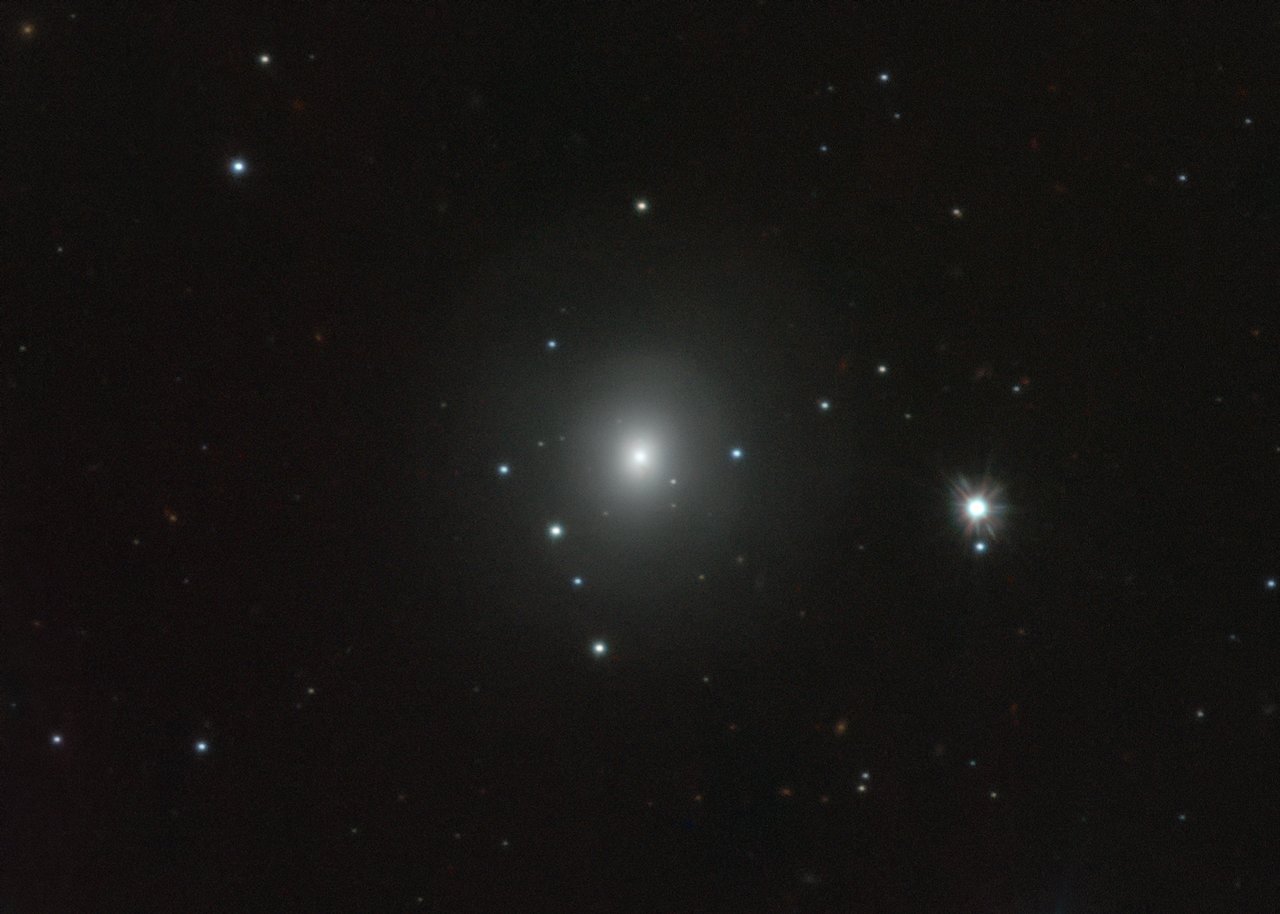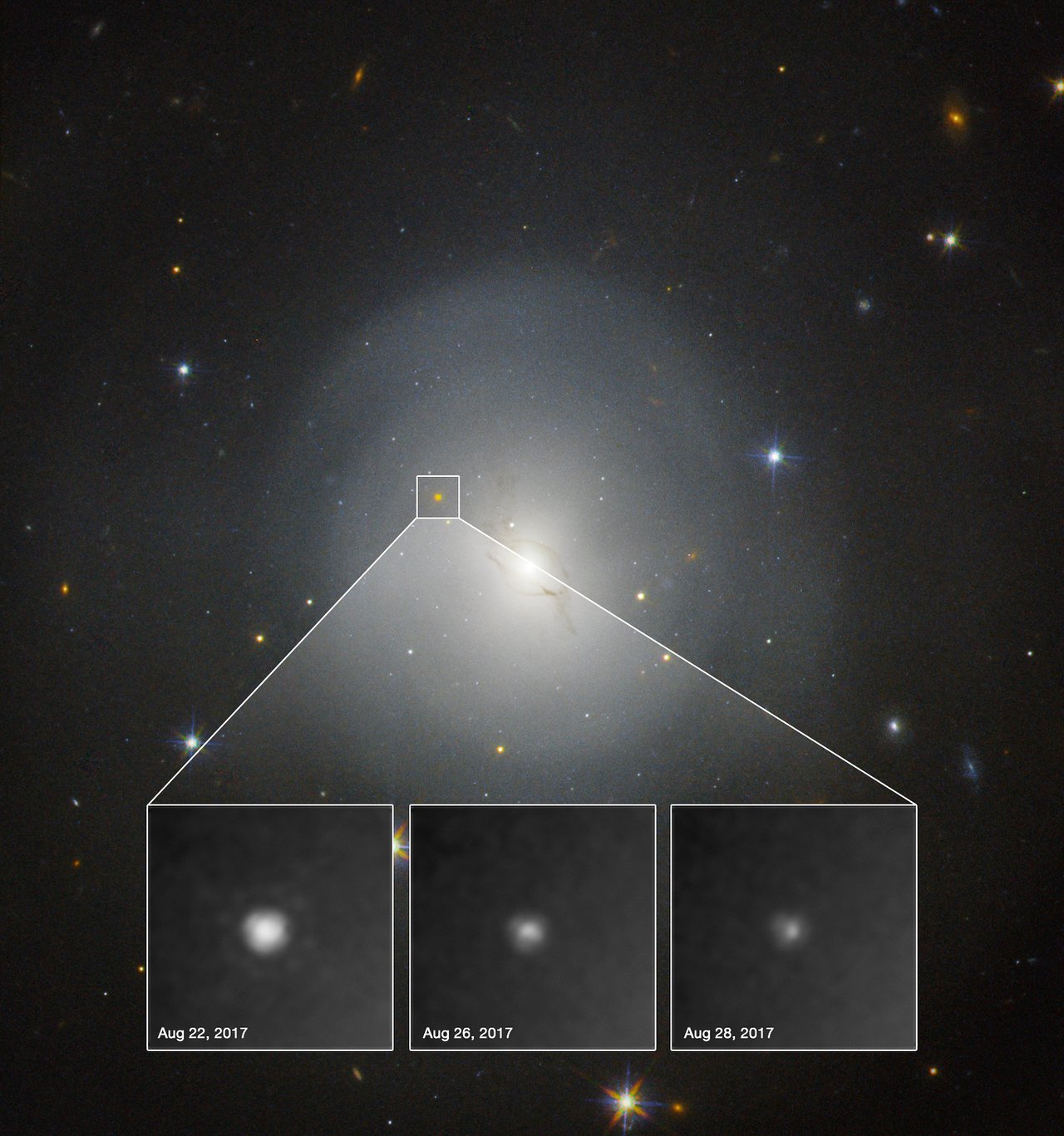
Image of NGC 4993 courtesy of ESO/A. Grado
Yesterday, it was announced that, for the first time, a gravitational wave source in the sky had also been detected with ordinary telescopes; in other words, scientists for the first time measured both gravitational waves and electromagnetic waves produced by a single event.
The event was the merger of two neutron stars, which had been slowly spiralling toward each other for millions (probably billions) of years. The masses of the neutron stars aren't known precisely, but one was slightly more massive (1.4 - 2.3 solar masses) than the other (0.9 - 1.4 solar masses). When they merged, their violent coalescence produced both a "chirp" of gravitational waves and a burst of gamma rays -- followed by several weeks of radio, optical and X-rays produced by the ejection of roughly 0.05 solar masses of very hot gas.
The gravitational wave signal peaked at UT 2017 Aug 17, 12:41:04. In space, the Fermi satellite's Gamma-ray Burst Monitor detected a flash of gamma rays at UT 2017 Aug 17, 12:41:06.
Q: Assuming that the gamma rays were created at exactly
the same time as the gravitational waves,
what is the difference in arrival time?
Astronomers have identified the host galaxy of this event as a galaxy called NGC 4993:

Image of NGC 4993 courtesy of
ESO/A. Grado
 Image of NGC 4993 and GW 170817 courtesy of
NASA and ESA. Acknowledgment: N. Tanvir (U. Leicester), A. Levan (U. Warwick), and A. Fruchter and O. Fox (STScI)
Image of NGC 4993 and GW 170817 courtesy of
NASA and ESA. Acknowledgment: N. Tanvir (U. Leicester), A. Levan (U. Warwick), and A. Fruchter and O. Fox (STScI)
which is roughly 130 million light years from Earth.
Q: How many seconds does it take light to travel
from this galaxy to the Earth?
Q: What is the percentage difference between the
speed of gravitational waves and the speed of light?